Captive breeding often termed ‘conservation breeding,’ means keeping endangered plants and animals in a certain controlled environment. The animals, as well as plants, are kept outside their natural habitat, in zoos, aquariums, botanical gardens, and other such facilities to keep them safe and protected from extinction.
A major advantage – amongst numerous others – of captive breeding is that it helps introduce a healthy generation of the species to the world. However, amidst the advantages, there are certain downsides to the program too.
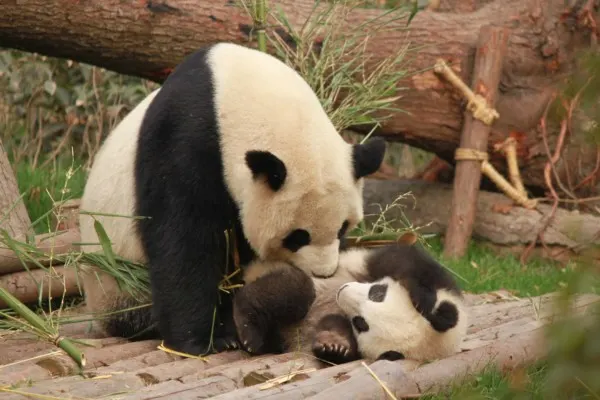
Keep reading to know the pros and cons of captive breeding.
Why Do We Need Captive Breeding?
There are a number of advantages of captive breeding, which we’ll discuss in-depth in the article. But, to address the question of why we need it, here are some situations that vouch for it being a necessity today:
- Threat of extinction
- Spread of disease
- Excessive predation
- Overhunting by the humans
- A Possibility for reintroducing a species to the wild
All these factors serve as the ground for setting up such breeding programs. Captive breeding hence increases the chances of preserving our endangered species; that is also one way how captive breeding helps ecosystems. We will discuss more on this in the pros and cons of captive breeding.
Since, according to IUCN’s List of Threatened Animals, around 11% of birds and one-fourth of mammals are near extinction, such programs are the need of the hour to help preserve the species population.
Examples of Captive Breeding
Before we go on to the pros and cons of captive breeding, here are some success stories of captive breeding. The animals below are a few examples that have been bred successfully with rewarding results in captivity:
Black-footed ferret
These are typical predators, feasting and living in the North American colonies of prairie dogs.
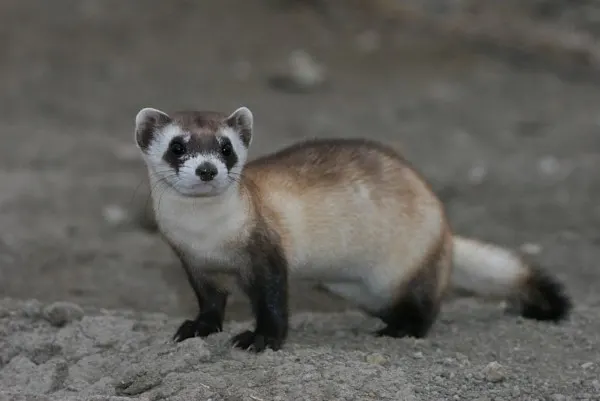
Once a large community, the species suffered a significant population decline followed by disease and loss of habitat.
California Condor
Amazingly large vultures, these condors are scavengers, relying on dead animals like deers and cattle.
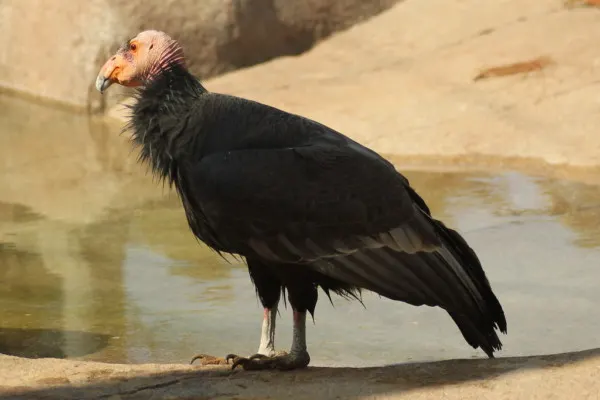
The California condor, too, was near extinction after a DDT poisoning and habitat destruction before being saved by captive breeding.
Arabian Oryx
This beautiful and alluring ungulate was unfortunately nearly hunted down to extinction.
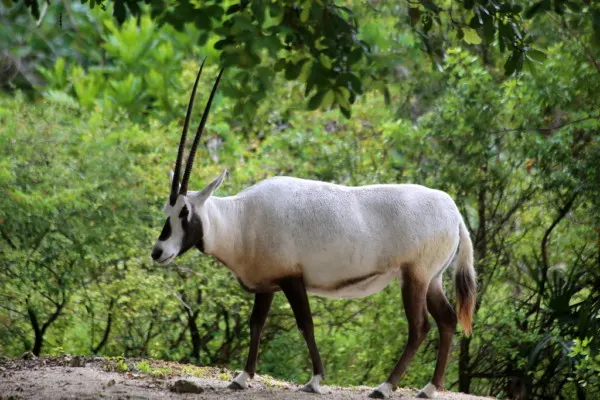
The breeding program started with nine oryxes and proved to be a success, and later, a whole population of these oryxes was successfully released into the wild.
Golden Lion Tamarin
The golden lion tamarins suffered majorly due to deforestation. They lost their habitat and food, and as a consequence, the population declined to an alarming degree until conservation and restoration programs were set up.
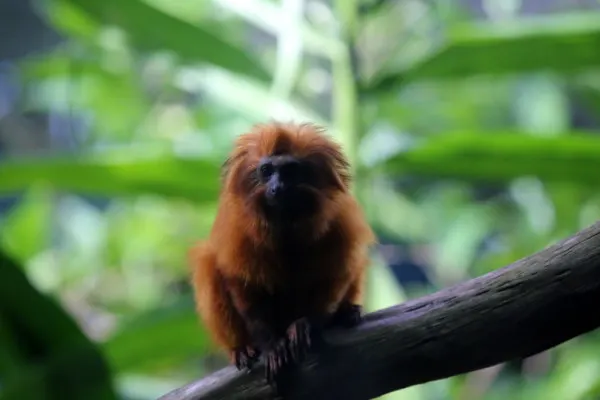
This little monkey today even has a day to celebrate its existence, i.e., August 2nd.
Red Wolf
Classified as critically endangered canines, the red wolf is a species between the coyote and grey wolf.
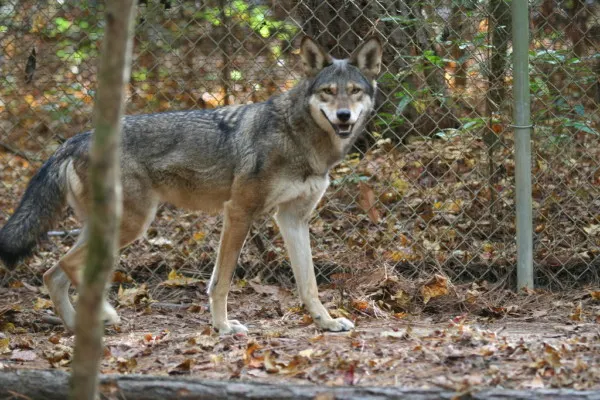
The species is near extinction in the wild, but conservation efforts are in place across various habitats in the United States.
Overview – Pros and Cons of Captive Breeding
While there are several advantages of captive breeding, many people still disagree with the concept. For instance, many animal rights groups consider it unethical and immoral to interfere in the lives of the animals and the natural environment.
Here’s a list of the pros and cons of captive breeding programs:
Pros of Captive Breeding
- Captive breeding saves animals from extinction, disease, and other threats.
- Captive breeding provides better living conditions for animals.
- Places like zoos and public aquariums educate people about the conservation and protection of the species.
- Captive breeding informs people about the animals and their natural environment; it often helps generate funds for research and protection.
- The animals receive the best health care facilities.
- It can also help reintroduce a species back into the wild.
- Sometimes we get food resources from the animals in captivity, like eggs, milk, etc. These may help fight world hunger.
- It can also serve as an economic resource – by promoting tourism and employment opportunities.
- Helpful for scientific research.
- Captive breeding can help cross-breed different animals. This can help create a new gene pool of animals from different zones and areas around the world.
Cons of Captive Breeding
- Not all animals do well in captive breeding. There are a number of unsuccessful stories of captive breeding too. For instance, Lonesome George, who died in captivity, taking the entire species with him.
- Some of the enclosures are too small for the animals to carry out their routine activities.
- Issues such as OCD, depression, and anxiety have been observed in animals living in captivity.
- It’s expensive. There’s no denying the cost of food, medical, maintenance, and other miscellaneous expenses that we’ll incur to keep the animals in an unnatural setting.
- It can be dangerous; the caretakers often suffer from bites, stings, pounds, etc., from the animals.
- The reintroduction can sometimes lead to a spread of disease in the uninfected wild population.
- The artificial setting can never be 100% close to the actual natural environment. Thus it can lead to a host of physical and psychological issues with the animals.
- Animals born in captivity often have to stay in captivity all their lives.
- Captive animals are often inbred, leading to many new problems, including infertility, expression of recessive traits, and other genetic issues.
- A single program or zoo cannot keep and sustain the entire species; we need global cooperation, which is not easy to get.
What are the Advantages of Captive Breeding?
Now that we’ve discussed the pros and cons of captive breeding, let’s take a look at the advantages of captive breeding.
Animal Protection and Safety
The captive breeding programs ensure that the animals are safe first and foremost, from other predators, diseases, dehabilitation, and other threats.
Much of our wildlife has been lost, and some have even been completely wiped out due to either disease or predation.
Many others have suffered due to the destruction of their natural habitats, like deforestation. So the zoos, aquariums, and other such centers provide a safe place for breeding the animals – with a high risk of extinction – in a protected, controlled environment.
Better Provision of Medical Facilities
Another major advantage to the name is better medical facilities. The wildlife often suffers because of the lack of proper care and medical facilities. Think of all the species that could’ve been saved but weren’t because the animals – and plants – couldn’t get the medical attention they needed at the time.
Many even suffered from malnutrition leading to chronic health conditions.
Enclosed space enables caretakers to assess the health of the primates regularly. They can, thus, be proactive in case of a spread of a disease or a general decline in health.
Natural as Ever
Hence these places provide a safe and closest natural environment for the animals to breed and grow. There’s a lot of work that goes on behind the breeding centers. They ensure the animals get all their basic necessities in a controlled but natural setting.
Everything from the temperature, climate, surroundings, etc., is carefully monitored. So captive breeding ensures the animals get a natural habitat of their own.
Enriched Population
The population hence produced and nurtured in these controlled settings is of good health. Moreover, zoos are often also able to cross-breed the animals and enhance the gene pool.
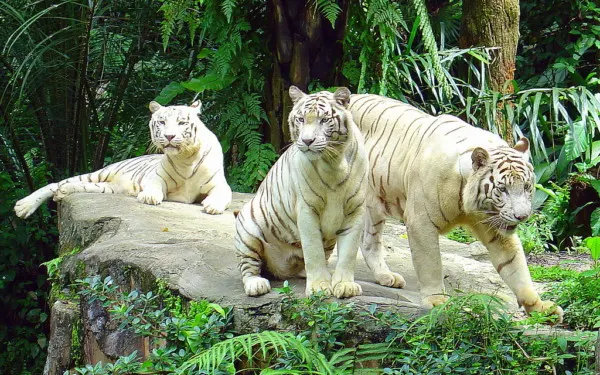
Such can be done in different zones, from zoos or settings all around the world. So the possibilities to explore are endless!
Restocking Wild Populations
An interesting and amazing advantage to these programs is reintroducing the nurtured population back into the wild. So many of the once-endangered animals now have a success story and were easily shifted back to the natural setting, just like the Arabian Oryxes.
A Chance at Life
The best part is that these captive breeding programs give the animals a chance at life. As a result, we can preserve nature and species which would otherwise be lost to nature taking its course.
What are the Disadvantages of Captive Breeding?
While there are a number of advantages of captive breeding programs, there are a few concerns as well. Not all species have had successful in-house breeding, as we discussed in the pros and cons of captive breeding. So is captive breeding bad?
Let’s check out.
Bad Treatment by Caretakers
Often a great concern of the animal rights activists and organizations is that the animals are not treated well in many places.
We can’t argue with the costs and level of patience needed to help these animals. But in some parts of the world, the animals are even forced to entertain the visitors, aren’t well-fed, and don’t have the free will they would in a natural setting.
So the argument comes about: is captive breeding good?
Restrictive Environment
Sometimes the animals don’t have much space to roam around as they please. Such restrictive environments like cages often limit them physically and can do more harm than good.
This is typical for larger animals like tigers, elephants, and gorillas. For instance, lions and tigers are limited by 18,000 times in a typical zoo compared to their natural setting.
Bigger animals like polar bears are limited further by a million times in space in a zoo setting!
So, it’s not quite as ‘close to nature’ as we think!
Inbreeding
While cross-breeding is a major advantage, there’s an increased chance of inbreeding too. With the animals living in closer proximity, it’s often difficult to step in and stop inbreeding.
So amongst the pros and cons of captive breeding, inbreeding and even outbreeding is a major concern.
Despite the efforts to keep a healthy gene pool, animals in closed spaces often inbreed. That results in a decline in their physical fitness, as many of the repressed genetic traits come out in the offspring.
So we’ll have to deal with genetic problems, evolutionary changes, and a whole lot of new problems that can arise due to the limited founder species.
Release into the Wild – May Have Surprising Turnouts
While the reintroduction of the animals back into the wild has a number of benefits, it’s really not as easy as it sounds.
Taking the animals from their controlled and safe environment back into the wild can often lead to unexpected troubles. Also, if they have been kept in captivity for too long, it may get hard for them to reconnect with the others in the natural habitat.
For instance, take the case of Songbirds; they learn their song from their peers in the wild. Yet, whilst in captivity, nobody can teach them their song.
Moreover, it’s very important to ensure that the environment the animals are released into is viable and fit for them to return.
Behavior Changes
As living creatures, the animals also get depressed, lonely, and anxious living in an artificial setting. This may lead to certain behavioral changes and, worse, may affect their ability to survive in the wild.
Here’s how that happens: in a zoo, for instance, the animals get their food easily, often fed by their caretakers. So, they don’t have to hunt or look for prey. However, when these animals are reintroduced to the wild, they may have become so domesticated that it gets hard for them even to eat.
They also cannot fight or deal with predators once out into the wild. So they may even die of hunger or else, by the lack of the natural survival instinct.
So instead of it being a success, it takes us back to square one; the threat of possible extinction of the newly reintroduced – recovered – species.
So is Captive Breeding Good for the Environment?
Now looking at the pros and cons of captive breeding, there’s really not an easy answer.
But, we can say that if a species is actually near extinction, and by that, we mean there’s no other alternative to preserve it, only then can captive breeding serve as a last resort. We must take the necessary steps based on whether the species is endangered or threatened.
For cases where there’s simply a population decline, we shouldn’t opt for captive breeding. In fact, opting for the program in such scenarios may just be an unrequired interference and may depict how captive breeding hurts ecosystems instead.
So, if we weigh the pros and cons of captive breeding: if the challenges are met, the conditions are good, and the animals are prepared to live and survive in the wild, then yes, captive breeding is good for the environment.
However, unnecessary captivity is unwarranted, unethical even, and cannot be called ‘conservation.’
FAQs
What are the limitations of captive breeding in endangered species recovery conservation biology?
Captive breeding is the practice of breeding endangered species in captivity with the aim of reintroducing them into the wild to boost their populations. However, the success of captive breeding programs is limited by several factors. For example, inbreeding can reduce genetic diversity, which can lead to decreased fitness and increased susceptibility to disease.
Additionally, captive-bred animals may not have the necessary skills to survive in the wild, and reintroduction programs themselves can be expensive and logistically challenging.
What are the limitations of captive breeding in endangered species?
Captive breeding in endangered species is the practice of breeding animals in captivity in order to increase their population and prevent extinction. However, there are limitations to this approach. One major limitation is that captive-bred animals may not have the necessary genetic diversity to survive in the wild, leading to a lack of adaptability and increased susceptibility to diseases.
Additionally, the process of captive breeding can be expensive and time-consuming, and may divert resources away from other conservation efforts such as habitat preservation.
What is a limiting factor for captive breeding programs?
A limiting factor for captive breeding programs is the loss of genetic diversity. This can occur when a small population of animals is bred repeatedly over generations, leading to inbreeding and a reduction in genetic variation. This can result in reduced fitness, increased susceptibility to disease, and decreased adaptability to changing environments.
What are the problems with captive breeding?
Captive breeding is the practice of breeding animals in controlled environments, often for conservation purposes. However, there are several problems associated with captive breeding programs. One major issue is that captive-bred animals may not have the necessary genetic diversity to survive in the wild, making them more vulnerable to disease and environmental changes.
Additionally, captive breeding can be expensive and time-consuming, and it may divert resources away from other conservation efforts that could have a greater impact on wild populations.
